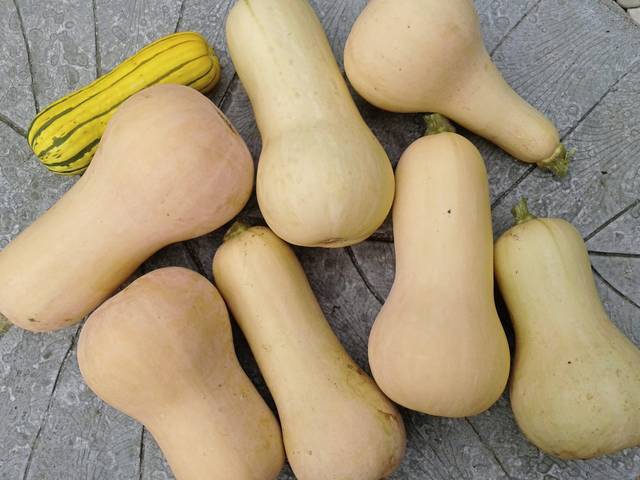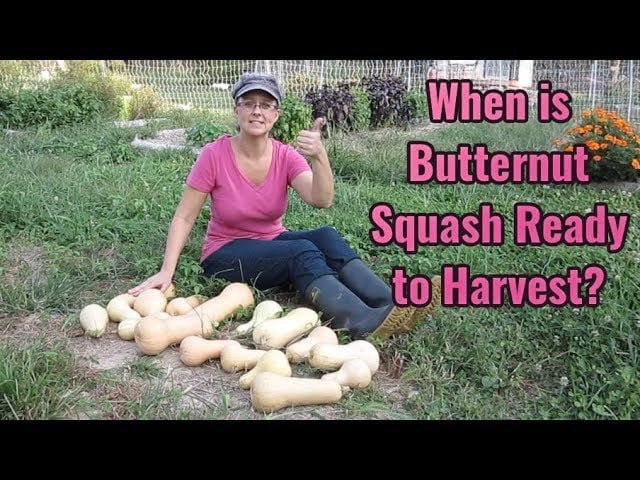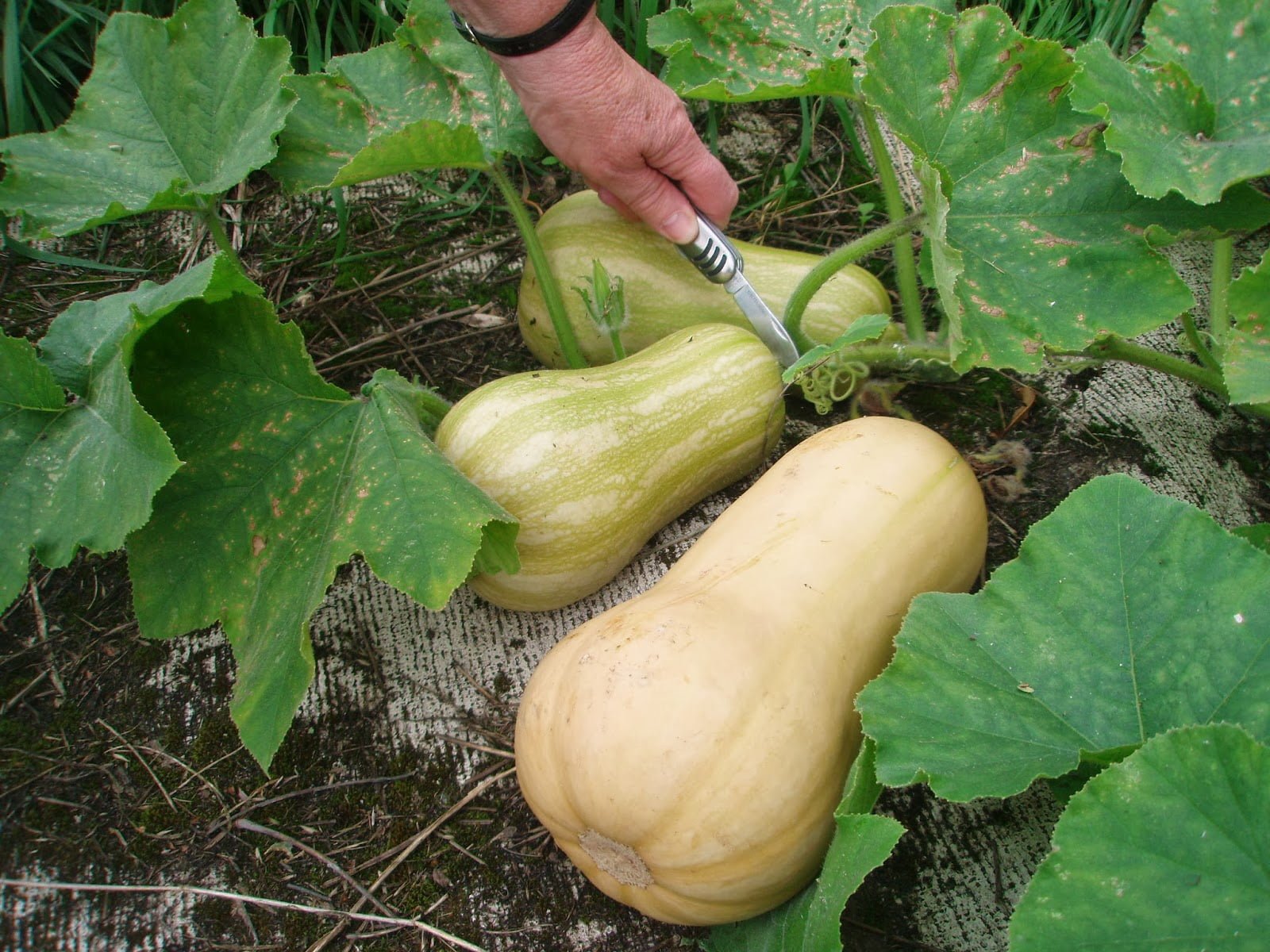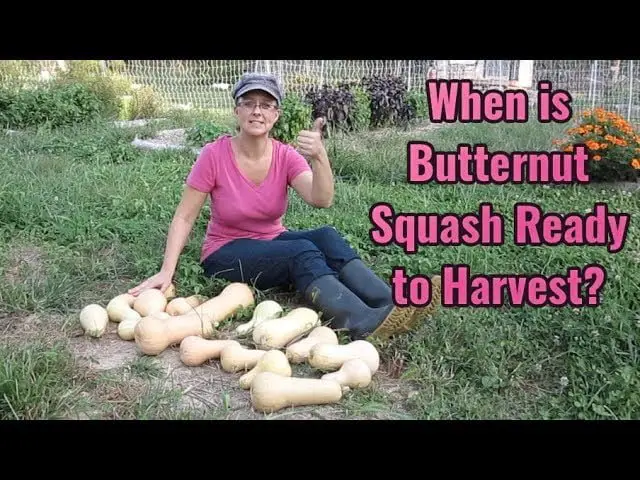You’re ready to enjoy the delicious flavors of butternut squash, but how do you know when it’s the perfect time to pluck them from the garden? From checking the size and color to giving them a gentle tap, this article will guide you on recognizing the telltale signs that indicate your butternut squash is ready to harvest. So, put on your gardening gloves and get ready to savor the taste of a successful harvest.

Appearance of the Butternut Squash
Size of the Squash
When determining the readiness of your butternut squash, the first aspect to consider is its size. A fully matured butternut squash typically measures between 8 and 12 inches in length. Anything smaller than this size may indicate that the squash is still developing and needs more time to reach its full potential. Be patient and allow it to continue growing until it reaches the optimal size.
Color of the Squash
The color of the butternut squash is another reliable indicator of its ripeness. A mature butternut squash should have a uniform tan or beige color throughout its skin. As it matures, the green color that may have been present when it was younger will gradually fade. Avoid picking butternut squash with any patches of green or unripe areas, as this could mean that it is not yet ready to harvest.
Texture of the Skin
The texture of the butternut squash’s skin can provide valuable insight into its readiness for harvest. When gently rubbing your fingers over the skin, a fully matured squash will feel firm and smooth. The skin should be tough and resistant to light pressure. If the skin feels soft or has a spongy texture, it may indicate that the squash is not yet ripe. Wait a few more days for the skin to harden before picking your butternut squash.
Tendril Method
Observing the Tendril
Another method to determine the readiness of your butternut squash is the tendril method. Tendrils are the curly protrusions that develop near the stem of the squash. As the fruit matures, these tendrils will gradually change in appearance, providing valuable information about its ripeness. Take a close look at the tendril closest to the squash and observe its characteristics.
Interpreting the Tendril Color
The color of the tendril can offer valuable insights into the ripeness of the butternut squash. If the tendril is still green or shows no signs of withering, it indicates that the squash is still developing and needs more time on the vine. However, if the tendril has turned completely brown and appears dried out, it is a clear sign that the butternut squash is ready for harvest. Keep a close eye on the tendril color to accurately determine when your squash has reached its peak ripeness.

Thumping Technique
Tapping the Squash
The thumping technique is a popular way to gauge the ripeness of various fruits and vegetables, including butternut squash. By gently tapping on the squash with your knuckles, you can listen for specific sounds that indicate its readiness for harvest. Give the squash a few light taps and pay attention to the noise it produces.
Listening to the Sound
When you tap a fully matured butternut squash, you should hear a hollow sound reverberating from within. This is a positive sign that the squash has a dense and dry flesh, indicating its ripeness. Conversely, if the sound is dull and lacks resonance, it may suggest that the squash is still immature and not yet ready to be picked. Use your ears as a guide and listen for that distinct hollow thumping sound to ascertain the maturity of your butternut squash.
Drying and Browning of the Stem
Examining the Stem
The stem of the butternut squash can offer valuable clues about its readiness for harvest. Take a close look at the stem where it connects to the fruit. An important sign to watch out for is the drying and browning of the stem.
Assessing Drying and Browning
A fully matured butternut squash will exhibit a dried and hardened stem. As it nears its peak ripeness, the stem will change in color, gradually turning brown. This drying and browning of the stem is a reliable indicator that your butternut squash is ready to be harvested. However, if the stem is still green and moist, the squash may require additional time on the vine to reach its full maturity. Carefully inspect the stem to accurately assess the readiness of your butternut squash.

Hardness of the Rind
Pressing the Rind
Determining the hardness of the butternut squash’s rind can give you crucial insights into its ripeness. Gently press your finger or thumb against the rind of the squash in different areas to test its firmness.
Evaluating Firmness
When pressing the rind of a fully matured butternut squash, it should feel firm and resistant to slight pressure. The rind’s firmness is an indication that the squash has developed a thick and sturdy outer layer, protecting the flavorful and tender flesh inside. If the rind feels soft or yields easily to your touch, it suggests that the butternut squash is not yet fully ripe. Allow it more time to mature and harden before harvesting for the best flavor and texture.
Curing Period
Understanding the Curing Process
The curing period is an essential step after harvesting butternut squash to ensure optimal flavor and storage longevity. Curing involves placing the harvested squash in a warm and well-ventilated area for a specific duration, allowing its skin to toughen and any wounds to heal. This process enhances the sweetness and richness of the squash’s flavor.
Taking into Account Ideal Duration
The ideal duration for curing butternut squash is approximately one to two weeks. During this time, ensure that the temperature of the curing location remains between 80 and 85 degrees Fahrenheit with a humidity level of around 80%. Monitor the squash regularly during the curing period to ensure it is progressing as desired. Properly cured butternut squash will be ready to enjoy and can be stored for several months, extending their availability and enjoyment.

Harvest Time Based on Days to Maturity
Checking Seed Packet Information
To accurately determine the harvest time for your butternut squash, refer to the information provided on the seed packet. Each variety may have a different number of days to maturity, which refers to the average amount of time required for the squash to reach its peak ripeness after planting.
Calculating Days to Maturity
From the time you planted the butternut squash seeds, count the number of days specified on the seed packet. This will give you a general estimate of when the squash should be ready for harvest. It is important to note that this estimation is not an exact science and may vary slightly due to growing conditions. Use this as a guideline, along with other indicators of ripeness, to ensure you pick your butternut squash at the perfect moment.
Monitoring Growth Period
During the growth period, it is essential to monitor the progress of your butternut squash regularly. Keep a close eye on the plant’s development, from the emergence of the first blossoms to the maturation of the fruit. By observing the growth and changes over time, you can gain a better understanding of when your butternut squash will be ready to harvest. Patience and attentive observation are key factors in ensuring a successful harvest.
Leaf Color and Condition
Observing Chlorophyll Fade
The color and condition of the leaves of your butternut squash plant can also provide valuable clues about the readiness of the fruit. As the squash nears maturity, the chlorophyll in the leaves will gradually fade, resulting in a shift in color.
Noticing Leaf Drying
One of the key changes to look for is the drying of the leaves. As the butternut squash fruit ripens, the leaves that are directly connected to it may dry out and wither. This is a natural process indicating that the fruit is nearing its peak ripeness. Pay attention to the level of drying and ensure it is consistent with other indicators of readiness before harvesting your butternut squash.
Considering Leaf Condition
In addition to color and drying, assessing the overall condition of the leaves can offer insights into the maturity of the butternut squash. Take note of any signs of disease or pest damage, as this may impact the health and quality of the fruit. Healthy, vibrant leaves contribute to the successful growth and development of the squash. Take care to maintain the well-being of the leaves throughout the growing season for optimal yield.

Frost and Weather Impact
Knowing the Risk of Frost
Being aware of the risk of frost is crucial when determining the optimal time to harvest your butternut squash. Frost can cause significant damage to the fruit, rendering it inedible or hastening its decay.
Keeping an Eye on Weather Forecast
Regularly monitoring the weather forecast in your area is vital, especially as the growing season progresses. Keep an eye out for any potential frost warnings or rapidly dropping temperatures. If frost is predicted, it is advisable to harvest your butternut squash immediately to avoid any damage.
Taking Necessary Precautions
If you are faced with the threat of frost before your butternut squash has fully matured, take the necessary precautions to ensure its survival. Cover the plants with protective materials such as blankets or row covers to shield them from the cold. Additionally, you can attempt to extend the growing season by using garden hoop tunnels or cold frames. Remember, prevention is key when it comes to protecting your valuable harvest from frost damage.
Time Frame after Flowering
Noting the First Blossom
From the moment the first blossom appears on your butternut squash plant, you can start keeping track of the time frame until it is ready for harvest. Identifying the initial bloom signals the beginning of the fruit’s development process.
Calculating Time Frame
The typical time frame for butternut squash to reach maturity after flowering is around 70 to 90 days. This estimation may vary depending on various factors such as temperature, sunlight exposure, and growing conditions. By noting the first blossom and counting the days accordingly, you can estimate when your butternut squash is likely to reach its peak ripeness.
Confirming Additional Signs of Maturity
While counting the days after the first blossom is a useful guideline, it is essential to confirm the signs of maturity discussed earlier. Consider the appearance, tendril color, rind hardness, stem drying, and other indicators to validate the readiness of your butternut squash. Using a combination of both the time frame since flowering and the physical characteristics will ensure that you make an informed decision when harvesting your butternut squash.
In conclusion, assessing the readiness of butternut squash for harvest requires a holistic approach. By carefully observing and considering the size, color, texture, tendril, thumping sound, stem condition, rind hardness, curing period, days to maturity, leaf color, frost risk, and time frame after flowering, you can confidently determine the optimal moment to pick your butternut squash. Enjoy the satisfaction of harvesting a perfectly ripe and flavorful squash that will enhance your culinary endeavors. Happy gardening!



